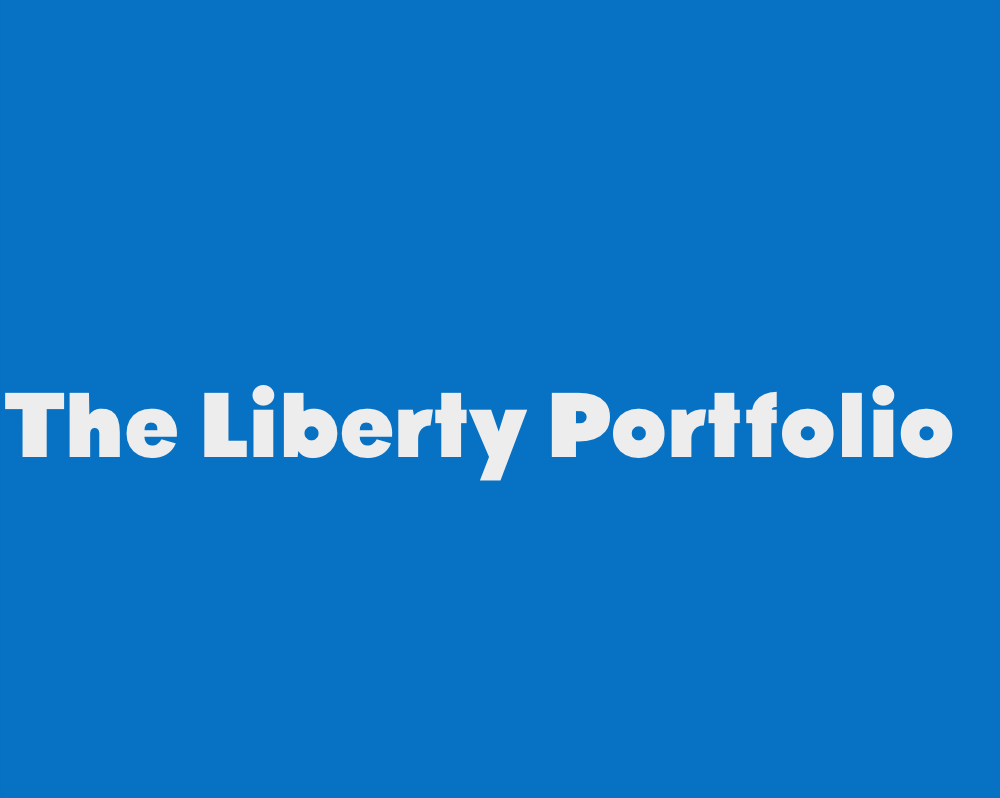Retirement Planning
Retirement Income for Salon Owners Explained
Explore ways salon owners can secure a stable income after retirement, covering smart investments, property leasing, and more.
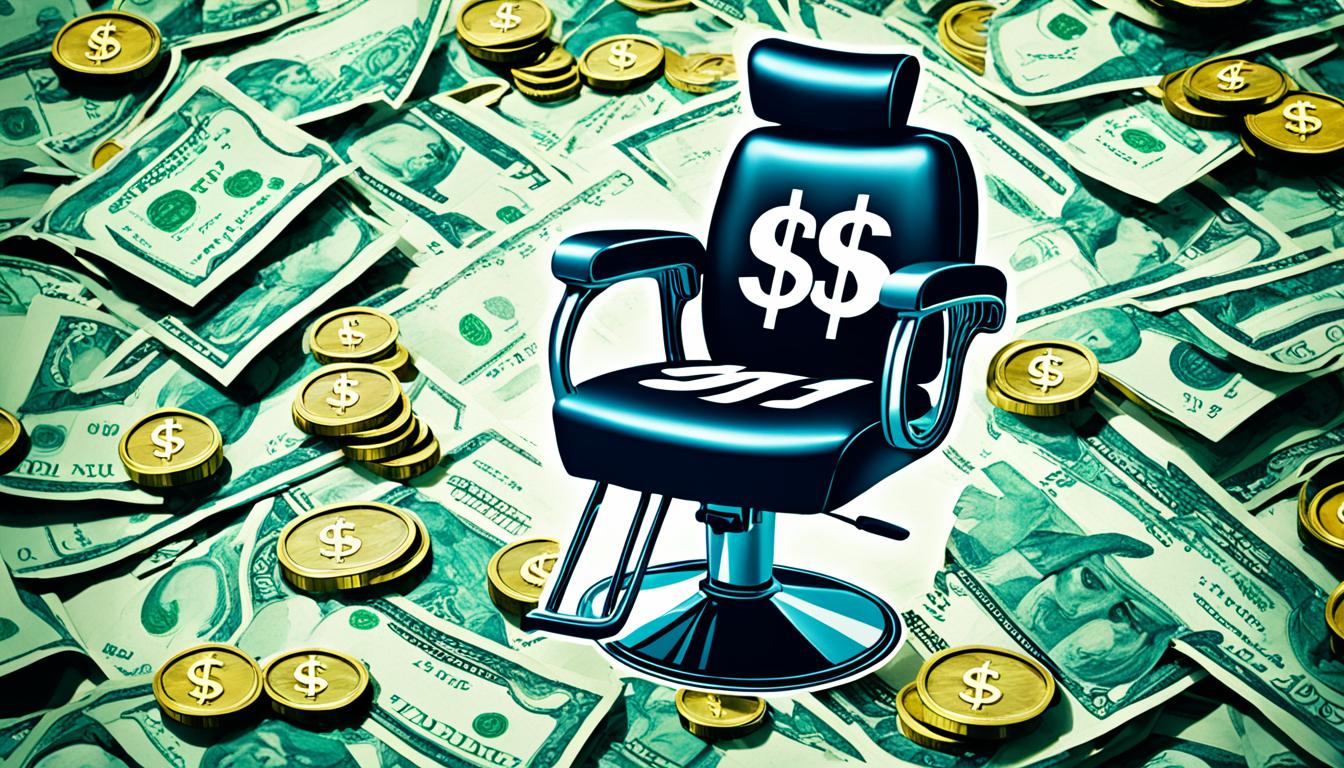
Did you know that only 33% of salon owners have a retirement savings plan in place? Many salon owners focus on growing their business and often overlook their own retirement needs. However, securing a stable income after retirement is crucial for long-term financial stability. This article will explore various ways salon owners can generate income in their retirement years and ensure a comfortable future.
Key Takeaways:
- Securing retirement income is crucial for salon owners to ensure long-term financial stability.
- Many salon owners overlook their retirement needs while focusing on growing their business.
- This article will explore strategies for salon owners to generate income in retirement.
- Smart investments, property leasing, and retirement accounts like IRAs and SEP plans are important tools for salon owners.
- Taking early steps towards retirement planning is crucial for building a solid foundation for the future.
The Importance of Saving for Retirement

In today’s uncertain economic climate, it has become increasingly crucial for salon owners to prioritize saving for retirement. With longer lifespans and rising living costs, it is essential to plan ahead and ensure financial security during the golden years. Unfortunately, studies reveal that personal savings rates in the United States have hit their lowest point in over 50 years, leaving many Americans ill-prepared for retirement. This section will highlight the importance of retirement saving and the long-term benefits it can provide.
One of the key reasons why retirement saving is vital for salon owners is the increasing cost of living. As inflation continues to erode the value of money over time, it becomes imperative to accumulate significant savings to maintain one’s desired lifestyle during retirement. Additionally, medical expenses, which tend to rise with age, are another critical factor that salon owners need to consider when saving for retirement. By starting early and setting aside funds regularly, salon owners can better prepare themselves for any unexpected healthcare costs that may arise.

Having sufficient retirement savings also provides financial independence and peace of mind. It allows salon owners to retire comfortably, free from the stress of financial constraints. A well-funded retirement can provide the opportunity to pursue new interests, travel, or even start a different business venture without worries about financial stability. It offers the freedom to enjoy the fruits of their labor and seize new opportunities during this stage of life.
“The habit of saving is itself an education; it fosters every virtue, teaches self-denial, cultivates the sense of order, trains to forethought, and so broadens the mind.” – T.T. Munger
While the thought of retirement may seem distant during the busy years of managing a salon, the earlier salon owners start saving, the greater the potential for their savings to grow. By harnessing the power of compounding interest, even small contributions over an extended period can generate substantial retirement funds. It is crucial to leverage available retirement savings options, such as individual retirement accounts (IRAs), and explore investment opportunities to maximize returns.
A comprehensive retirement plan that incorporates regular saving, wise investment choices, and careful budgeting is the key to financial security in retirement. Salon owners should develop a realistic retirement savings goal based on their specific needs and aspirations. They should consult with financial professionals who can provide expert guidance and help create a customized plan tailored to their unique circumstances.
Benefits of Retirement Saving Retirement Savings Tips 1. Financial security 1. Start saving early 2. Independence and peace of mind 2. Set realistic saving goals 3. Flexibility to pursue interests 3. Leverage retirement savings options 4. Protect against rising costs 4. Consult with financial professionals
Salon owners must actively prioritize retirement saving to secure their financial future. By recognizing the importance of saving for retirement early on and implementing smart saving strategies, they can enjoy the peace of mind knowing that their hard work will be rewarded with a comfortable retirement and a financially secure future.
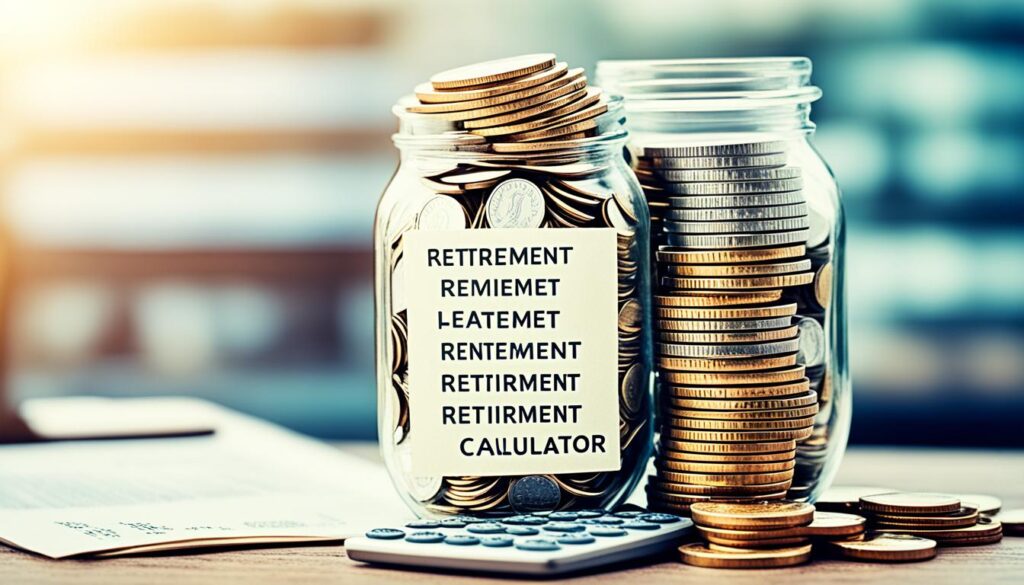
Three Sources of Retirement Income
Salon owners can rely on three main sources of retirement income. These include Social Security, company pension plans, and individual savings. While Social Security may not be enough to provide a comfortable retirement, it still serves as a valuable source of income. Company pension plans, although becoming less common, can provide additional financial support in retirement. However, it is crucial for salon owners to focus on building their individual savings through retirement accounts, such as IRAs, to ensure a secure future.
Social Security
Social Security plays a significant role in retirement income for many Americans, including salon owners. Through contributions made during their working years, salon owners become eligible to receive Social Security benefits upon reaching retirement age. These benefits are determined based on a complex formula that takes into account an individual’s earnings history, the number of years worked, and the age at which they begin receiving benefits.
While Social Security provides a foundation for retirement income, it is important to note that it may not be enough to cover all living expenses. The benefit amount received varies depending on individual circumstances, making it essential for salon owners to have additional sources of income to achieve a comfortable retirement lifestyle.
Company Pension Plans
In the past, company pension plans were a common retirement benefit offered to employees. These plans provide a steady stream of income during retirement, usually based on the employee’s years of service and salary. However, they have become less prevalent in recent years as many companies have shifted towards defined contribution plans, such as 401(k)s.

For salon owners who have access to a company pension plan, it can serve as an important source of retirement income. These plans typically require contributions from both the employee and the employer, accumulating over time. Upon retirement, salon owners can receive regular pension payments that supplement their other sources of income.
Individual Savings
Building individual savings is a critical aspect of retirement planning for salon owners. By consistently setting aside a portion of their earnings, salon owners can accumulate a substantial nest egg to support them during retirement. Individual savings can be invested in various vehicles, such as individual retirement accounts (IRAs), stocks, bonds, and real estate.
Retirement accounts, such as IRAs, provide tax advantages and a dedicated space to grow savings. Salon owners can contribute to these accounts on a regular basis and benefit from tax-deferred or tax-free growth, depending on the type of account chosen. Additionally, individual savings allow salon owners to have more control over their retirement funds and tailor their investment strategies to their specific goals and risk tolerance.

In Summary
When planning for retirement, salon owners should consider multiple sources of income to ensure financial stability. While Social Security and company pension plans offer valuable benefits, they may not be sufficient to cover all expenses. It is crucial for salon owners to prioritize individual savings through retirement accounts like IRAs, taking advantage of the tax advantages and control over their funds. By diversifying their retirement income sources, salon owners can create a solid foundation for a comfortable and secure retirement.
The IRA Advantage
An Individual Retirement Account (IRA) offers salon owners significant tax benefits and serves as an ideal retirement savings tool. With an IRA, salon owners can contribute pre-tax income and enjoy tax-deferred growth on investments within the account.
There are several advantages to opening an IRA for retirement savings. First, salon owners can take advantage of the tax benefits. Contributions to a traditional IRA are tax-deductible, meaning that the amount contributed is subtracted from the individual’s taxable income for that year. This can result in potential tax savings and increase the amount that can be invested for retirement.
Secondly, the investment growth within an IRA is tax-deferred. This means that any capital gains, dividends, or interest earned within the account are not taxed until withdrawal. Salon owners can benefit from this tax-deferred growth, allowing their investments to potentially grow faster over time.
“An IRA offers tax benefits and tax-deferred growth on investments, making it an attractive retirement savings option for salon owners.”
Salon owners can choose between two main types of IRAs: traditional IRAs and Roth IRAs. A traditional IRA allows individuals to contribute pre-tax income, meaning that contributions are tax-deductible. However, withdrawals from a traditional IRA are subject to income tax at retirement.

On the other hand, a Roth IRA offers tax-free withdrawals in retirement. Contributions to a Roth IRA are made with after-tax income, meaning that they are not tax-deductible. However, the investment growth and withdrawals are tax-free, providing salon owners with potentially greater tax advantages in the long run.
It is important for salon owners to start an IRA as early as possible to maximize the benefits of compounding interest and potential investment growth. By consistently contributing to an IRA over time, salon owners can build a substantial retirement nest egg.

Overall, an IRA is a valuable tool for salon owners to save for retirement while enjoying tax benefits and potential investment growth. It is recommended that salon owners consult with a financial advisor to determine the best type of IRA for their specific financial goals and circumstances.
Type of IRA Tax Treatment Contribution Limits Traditional IRA Contributions are tax-deductible; withdrawals are taxed as income $6,000 per year ($7,000 if age 50 or older) Roth IRA Contributions are made with after-tax income; withdrawals are tax-free $6,000 per year ($7,000 if age 50 or older)
## References
- IRS – Individual Retirement Arrangements (IRAs)
- The Motley Fool – Types of IRAs: Traditional and Roth
Setting Up a Retirement Plan
To ensure a comfortable retirement, salon owners should take proactive steps to set up a comprehensive retirement plan. By considering various elements such as opening a dedicated savings account, setting up an Individual Retirement Account (IRA), establishing direct deposit, and seeking the guidance of a financial advisor, salon owners can pave the way for a secure financial future.
Opening a Savings Account
One of the fundamental components of a retirement plan is a dedicated savings account. Salon owners should consider opening a high-yield savings account specifically earmarked for retirement funds. This account can serve as a secure repository for setting aside a portion of their income specifically for retirement savings. By consistently contributing to this account, salon owners can build a substantial nest egg over time.

Setting Up an Individual Retirement Account (IRA)
In addition to a savings account, salon owners should also establish an Individual Retirement Account (IRA). An IRA provides salon owners with tax advantages and a platform for investing in a wide range of assets to grow their retirement funds. Both traditional IRAs and Roth IRAs offer distinct benefits, depending on individual financial goals and circumstances.
With a traditional IRA, contributions are typically tax-deductible, reducing taxable income in the year the contributions are made. Roth IRAs, on the other hand, offer tax-free withdrawals in retirement. Consulting with a financial advisor can help salon owners determine which type of IRA is the most appropriate for their specific situation.
Establishing Direct Deposit
Salon owners can take advantage of direct deposit to automate contributions to their retirement savings. By working with their employer to set up direct deposit, a predetermined percentage of their income can be automatically deposited into their retirement savings account, whether it’s a savings account or an IRA. This approach promotes consistency and ensures that retirement contributions are made regularly and without the need for manual action.
Consulting a Financial Advisor
Seeking the guidance of a financial advisor can be invaluable in creating an effective retirement plan. A financial advisor can assess an individual’s specific goals, risk tolerance, and financial situation to provide personalized recommendations for retirement savings strategies. They can also assist with portfolio diversification, asset allocation, and long-term financial planning tailored to the salon owner’s unique needs and circumstances.
Retirement Plan Elements Benefits Opening a Savings Account – Secure repository for retirement savings Setting Up an IRA – Potential tax advantages and investment opportunities Establishing Direct Deposit – Automated contributions for consistent savings Consulting a Financial Advisor – Personalized guidance and expertise
With a well-rounded retirement plan that encompasses savings accounts, individual retirement accounts, direct deposit, and professional advice, salon owners can take proactive steps towards a secure financial future. By starting early and remaining disciplined, salon owners can build a robust retirement fund that ensures a comfortable and stress-free retirement.
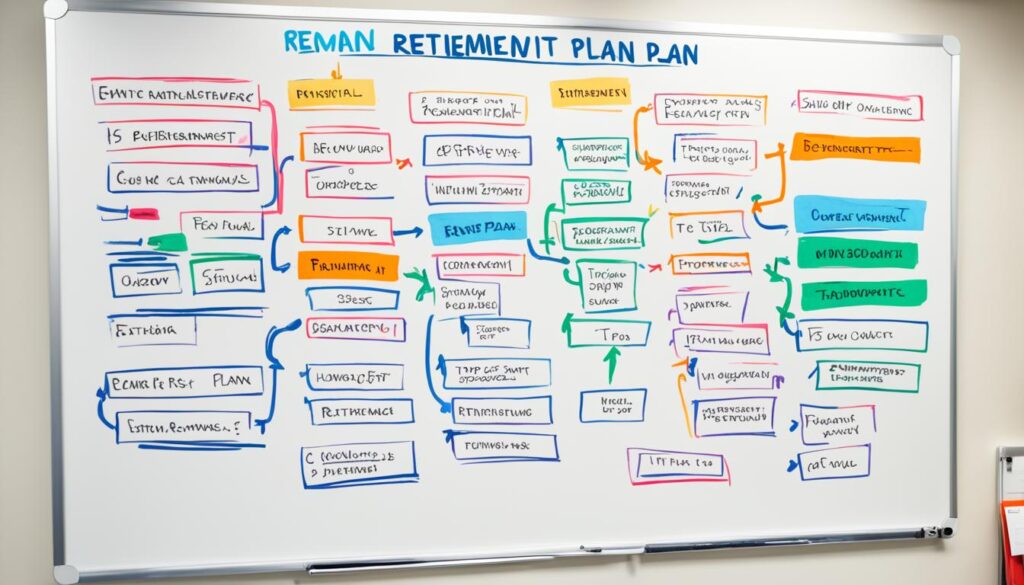
Retirement Planning for Independent Service Professionals
Retirement planning poses unique challenges for independent service professionals like salon owners who don’t have access to traditional employer benefits such as paid time off, health insurance, and retirement plans. However, with careful strategies and alternative retirement savings options, salon owners can plan for a comfortable retirement.
The Challenges of Retirement Planning for Salon Owners
Salon owners face several challenges when it comes to retirement planning. As independent contractors or small business owners, they are responsible for all aspects of their business, including managing finances and ensuring their own retirement savings.
Unlike employees who benefit from employer-sponsored retirement plans, salon owners must create and manage their retirement savings independently. This requires proactive financial planning to secure their future financial stability.
Alternative Retirement Savings Options
While salon owners may not have access to traditional employer retirement plans, there are alternative options that can help them save for retirement effectively:
- Simplified Employee Pension (SEP) Plans: SEP plans are designed specifically for self-employed individuals, including salon owners. With a SEP plan, salon owners can contribute to their own retirement savings while also making tax-deductible contributions on behalf of their employees, if applicable.
- Individual Retirement Accounts (IRAs): IRAs are another valuable retirement savings option for salon owners. Traditional IRAs allow for tax-deductible contributions, while Roth IRAs provide tax-free growth and withdrawals in retirement.
- Qualified Plans: Qualified plans, such as HR 10 or Keogh plans, are available to self-employed professionals and allow for tax-deferred contributions and potential tax deductions.

The Importance of Planning Ahead
Planning ahead is crucial for salon owners when it comes to retirement. By starting early and taking advantage of these alternative retirement savings options, salon owners can build a solid financial foundation for their future.
It is also important for salon owners to work with financial advisors who can help them navigate the complexities of retirement planning and guide them towards the most suitable options for their specific needs.
SEP Plans for Small Business Owners
Small business owners, including salon owners, can greatly benefit from SEP plans, also known as Simplified Employee Pension plans. These retirement savings plans are designed specifically for businesses with fewer than 100 employees, offering a flexible and tax-efficient way to save for retirement.
SEP plans allow small business owners to make contributions on behalf of themselves and their eligible employees. These contributions are made on a pre-tax basis, meaning they reduce the taxable income for both the business owner and the employee. This pre-tax savings feature provides immediate tax benefits and allows for greater retirement savings.
One of the key advantages of SEP plans is their flexibility in terms of contribution percentages. Business owners can contribute up to 25% of an employee’s eligible compensation, up to a maximum contribution limit of $58,000 per year (2021 limit). This flexibility allows business owners to adjust their contributions based on their financial circumstances and the needs of their business.
SEP plans offer benefits for both the business owner and the employees. For business owners, these plans provide an opportunity to save for retirement while reducing taxable income. The contributions made to the SEP plan grow tax-deferred until retirement, allowing for potential investment gains over time. As for employees, they can benefit from participating in a retirement savings plan that is easy to administer and offers potential employer contributions.

The simplicity and flexibility of SEP plans make them an attractive retirement savings option for small business owners. With the ability to contribute a significant portion of eligible compensation, business owners can build a substantial retirement nest egg while enjoying tax benefits. Additionally, SEP plans offer a straightforward administration process, allowing business owners to focus on their core operations.
To set up a SEP plan, small business owners must establish a written agreement and provide their eligible employees with annual disclosures about the plan. Contributions are made directly to individual retirement accounts (IRAs) in the employees’ names, giving them control over their retirement savings.
Choosing the right retirement savings option is crucial for small business owners, and SEP plans offer unique advantages. Their flexibility, tax benefits, and ease of administration make them a popular choice among salon owners and other small business owners looking to secure their financial future.
| Benefits of SEP Plans for Small Business Owners |
|---|
| Pre-tax savings |
| Flexible contribution percentages |
| Potential for tax-deferred growth |
| Easy administration |
| Opportunity to build a substantial retirement nest egg |
| Employee participation and potential employer contributions |
SIMPLE IRAs for Self-Employed Professionals
Self-employed professionals, including salon owners, have unique retirement savings needs. One retirement savings option specifically designed to cater to their requirements is the Savings Incentive Match Plan for Employees (SIMPLE) IRA. This section will explore how SIMPLE IRAs work, the requirements for employers and employees, and the advantages of this retirement savings plan for self-employed professionals.
How Does a SIMPLE IRA Work?
A SIMPLE IRA is a retirement savings plan that allows self-employed professionals to contribute a portion of their earnings toward their retirement. The plan works by enabling employers to make contributions on behalf of their employees and offering the option for employees to contribute from their own income as well.
Under a SIMPLE IRA, the contributions made by the employer are tax-deductible, and the earnings within the account grow tax-deferred until withdrawal. Employees also have the advantage of contributing pre-tax income, reducing their current taxable income. Contributions from both the employer and employee are deposited into the individual employee’s SIMPLE IRA account.
Requirements for Employers and Employees
For self-employed professionals like salon owners, the requirements for establishing a SIMPLE IRA plan are straightforward. To be eligible for a SIMPLE IRA, the business must have 100 or fewer employees who received at least $5,000 in compensation during the previous calendar year.

As an employer, you must agree to make either a non-elective contribution to each eligible employee’s SIMPLE IRA or match the employee’s contributions up to a certain percentage of their salary. The matching contribution must be a dollar-for-dollar match on the first 3% of the employee’s salary, or it can be a non-elective contribution of 2% of the employee’s salary regardless of whether the employee makes their own contributions.
Employees, including self-employed professionals, must agree to have elective salary deferrals to their SIMPLE IRA account. They can contribute up to $13,500 as of 2021, and individuals aged 50 and older can make an additional catch-up contribution of $3,000.
The Advantages of a SIMPLE IRA for Self-Employed Professionals
For self-employed professionals, a SIMPLE IRA offers several advantages:
- Tax Benefits: Contributions made by the employer are tax-deductible, reducing your taxable income. Additionally, employees enjoy the benefit of contributing pre-tax income to their retirement accounts.
- Employee Retention: Offering a retirement savings plan like a SIMPLE IRA can attract and retain talented employees, resulting in a more stable and successful business.
- Flexible Contribution Options: As an employer, you have the flexibility to choose between a matching contribution or a non-elective contribution, depending on your business’s financial capabilities.
- Simplified Administration: Unlike more complex retirement plans, a SIMPLE IRA is relatively easy to administer, making it a convenient option for self-employed professionals.
- Portable Retirement Savings: If a self-employed professional decides to change careers or leave their current business, they can easily roll over their SIMPLE IRA funds into another eligible retirement account without penalties or taxes.
Individual Retirement Accounts (IRAs) for Salon Owners
For salon owners looking to secure their financial future, Individual Retirement Accounts (IRAs) offer a flexible and tax-advantaged way to save for retirement. By understanding the different types of IRAs available and how to maximize contributions, salon owners can make the most of these retirement savings accounts.
Traditional IRA
The traditional IRA is a popular choice for salon owners, providing potential tax advantages today. Contributions to a traditional IRA are typically tax-deductible, meaning they can lower the amount of income subject to taxes in the year they’re made. Additionally, investments within a traditional IRA grow tax-deferred until withdrawal during retirement.
Salon owners can leverage the tax benefits of a traditional IRA to build their retirement savings while potentially reducing their tax liabilities in the present. By lowering taxable income and deferring taxes on investment growth, salon owners can maximize their retirement savings potential.
Roth IRA
Another option for salon owners is the Roth IRA. Unlike a traditional IRA, contributions to a Roth IRA are made with after-tax dollars, meaning they are not tax-deductible in the year they’re made. However, the benefit of a Roth IRA lies in the tax-free growth and tax-free withdrawals in retirement.
With a Roth IRA, salon owners can potentially enjoy tax-free retirement income. Once contributions have been made, account owners can withdraw funds in retirement without incurring any additional tax liability. This can be particularly advantageous if salon owners anticipate being in a higher tax bracket during retirement.
| Type of IRA | Tax Advantages | Withdrawal Taxation |
|---|---|---|
| Traditional IRA | Contributions are typically tax-deductible; tax-deferred growth | Taxable upon withdrawal in retirement |
| Roth IRA | Tax-free growth; tax-free withdrawals in retirement | No additional tax liability upon withdrawal in retirement |
Deciding between a traditional IRA and a Roth IRA depends on individual financial circumstances and goals. Speaking with a financial advisor can help salon owners assess their specific needs and determine the most suitable option.
It’s worth noting that both traditional and Roth IRAs have contribution limits and eligibility requirements that salon owners should be aware of. For the 2021 tax year, the maximum contribution limit for both types of IRAs is $6,000, with an additional catch-up contribution of $1,000 for individuals aged 50 and older.
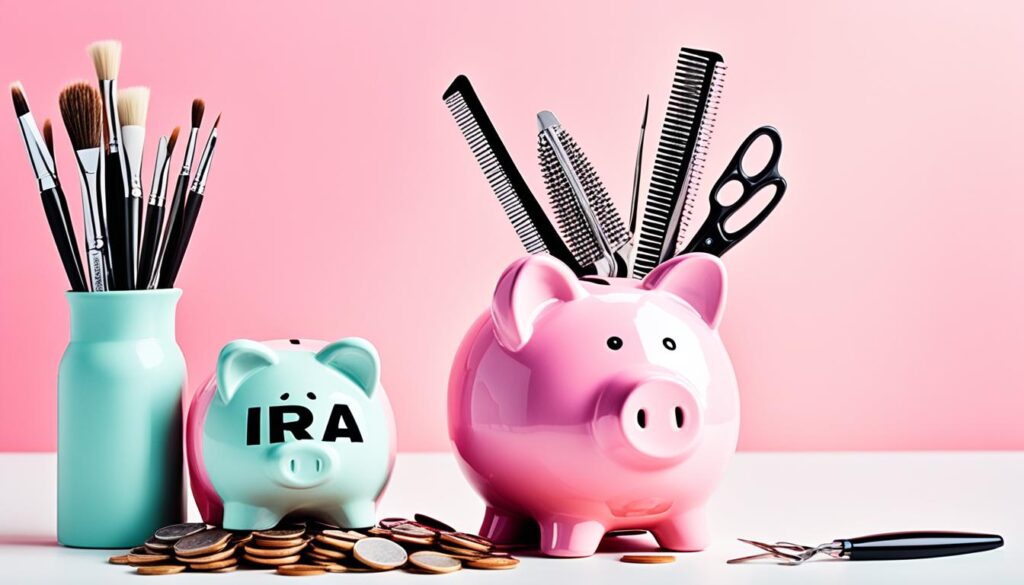
By utilizing Individual Retirement Accounts (IRAs), salon owners can effectively save for retirement and take advantage of the tax benefits offered by these accounts. Whether opting for a traditional IRA or a Roth IRA, salon owners have options that can provide financial security and a comfortable retirement.
Qualified Plans for Self-Employed Professionals
Self-employed professionals, including salon owners, have access to qualified plans such as HR 10 or Keogh plans for their retirement savings. These tax-deferred pension plans offer numerous benefits and can serve as effective options for salon owners looking to secure their financial future.
Benefits of Qualified Plans
Qualified plans provide self-employed professionals with several advantages. They allow salon owners to make tax-deductible contributions, reducing their taxable income and potentially lowering their overall tax liability. This means that salon owners can save more money for retirement while also enjoying immediate tax benefits.
In addition, qualified plans offer tax-deferred growth on contributions and earnings. This means that salon owners can potentially accumulate more wealth over time by reinvesting their earnings without having to pay taxes on them until withdrawal during retirement.
Contributing to Qualified Plans
Self-employed professionals, including salon owners, can make contributions to qualified plans based on their income. The contribution limits are generally higher compared to other retirement savings options, allowing salon owners to save significant amounts for their retirement.
It’s important to note that the contribution limits, as well as the specific rules and regulations, may vary depending on the type of qualified plan chosen. Salon owners should consult with a financial advisor or tax professional to determine the most suitable plan and contribution strategy for their individual circumstances.
Saving for Retirement with Qualified Plans
Qualified plans provide self-employed professionals, like salon owners, with a valuable opportunity to save for retirement. By contributing to these plans, salon owners can steadily build their retirement savings over time, ensuring financial security in their golden years.
With tax-deductible contributions and tax-deferred growth, qualified plans offer salon owners a powerful financial tool to maximize their retirement savings potential. It’s important for salon owners to explore the various qualified plan options available, understand the contribution limits and tax implications, and develop a retirement savings strategy that aligns with their long-term goals and objectives.

Solo 401(k) Plans for Business Owners
For business owners, including salon owners, who have no employees, a Solo 401(k) plan is an excellent retirement savings option. These plans offer numerous advantages, such as substantial contribution limits, flexibility in contributions, and the opportunity to roll over existing 401(k) accounts. By utilizing Solo 401(k) plans, salon owners can effectively save for retirement and secure their financial future.
Generous Contribution Limits: Solo 401(k) plans allow business owners to contribute more towards their retirement compared to other retirement savings options. In 2021, the contribution limits for Solo 401(k) plans are $58,000 or 100% of eligible compensation, whichever is lower. This includes both employee and employer contributions, providing salon owners with a significant opportunity to build their retirement savings.
Flexibility in Contributions: Unlike traditional 401(k) plans, Solo 401(k) plans offer flexibility in contribution amounts. Business owners can customize their contributions based on their financial situation and goals. This flexibility allows salon owners to save more during profitable years and adjust contributions during leaner periods.
Rollover Option: Salon owners who have previously participated in an employer-sponsored 401(k) plan can roll over their existing 401(k) funds into a Solo 401(k) plan. This consolidation simplifies retirement savings management and offers a unified approach to investing and building wealth.
Salon owners should carefully consider the advantages provided by Solo 401(k) plans. These plans offer a powerful tool for building retirement savings and securing financial stability. By taking advantage of the generous contribution limits, flexibility in contributions, and the ability to consolidate existing 401(k) funds, salon owners can optimize their retirement savings strategy.
Advantages of Solo 401(k) Plans Generous contribution limits Flexibility in contributions Ability to roll over existing 401(k) accounts
When compared to other retirement savings options, Solo 401(k) plans offer unique benefits for business owners. The combination of generous contribution limits, flexibility in contributions, and the option to roll over existing 401(k) funds make these plans a valuable tool for salon owners to save for retirement. By maximizing contributions and taking advantage of the tax advantages provided by Solo 401(k) plans, salon owners can create a solid foundation for a comfortable retirement.

Taking the First Steps Toward Retirement Savings
Before salon owners can effectively build their retirement savings, there are several crucial steps they should take to lay the foundation for a secure financial future. By following these initial actions, salon owners can set themselves up for long-term success in their retirement planning.
- Establish a savings account: The first step towards retirement savings is to open a dedicated savings account. This account will serve as the starting point for accumulating funds and setting aside money specifically for retirement.
- Pay off high-interest debt: Prioritizing debt repayment is essential in any financial planning journey. By focusing on paying off high-interest debts, such as credit card balances or personal loans, salon owners can create more flexibility in their budget and free up additional funds for retirement savings.
- Seek guidance from financial professionals: Consulting with a financial advisor or planner can provide valuable insights and expert advice tailored to a salon owner’s unique financial situation. These professionals can help develop a comprehensive retirement savings strategy, taking into consideration factors such as income, expenses, risk tolerance, and retirement goals.
By taking these initial steps, salon owners can begin their retirement savings journey on the right track. Establishing a savings account, reducing high-interest debt, and seeking guidance from financial professionals are crucial elements of a solid financial foundation for retirement.

Advantages of Taking the First Steps Towards Retirement Savings
| Benefits | Explanation |
|---|---|
| Financial security | Establishing a savings account and paying off debt contribute to greater financial stability for salon owners in retirement. |
| Reduced stress | Eliminating high-interest debt provides peace of mind and reduces financial stress and burden. |
| Expert guidance | Financial professionals can offer personalized advice and create a comprehensive retirement savings strategy. |
| Increased flexibility | Having a dedicated savings account and reduced debt allows for greater flexibility in managing finances and allocating funds towards retirement. |
The Importance of Financial Planning
As salon owners transition out of their businesses and receive sale proceeds, proper financial planning becomes crucial. It is essential to work with financial professionals to maximize the value of sale proceeds, develop investment strategies, and ensure long-term financial security. With the help of experts, salon owners can navigate the complexities of financial planning and make informed decisions.
One key aspect of financial planning is maximizing sale proceeds. The experts can assess the salon’s value, consider market conditions, and implement effective negotiation strategies to ensure a favorable sale outcome. By optimizing the sale proceeds, salon owners can have a solid foundation for their retirement and future financial endeavors.
Another important factor in financial planning is asset allocation. Financial professionals can assist salon owners in diversifying their investment portfolios and selecting the right mix of assets based on their risk tolerance, time horizon, and financial goals. This careful allocation of resources helps minimize risk and maximize returns, ensuring the growth of wealth over time.
“Proper financial planning is the key to unlocking the full potential of sale proceeds and achieving long-term financial security.”
Working with Financial Professionals
Collaborating with knowledgeable financial professionals who specialize in retirement planning and investment strategies is vital for salon owners. These experts bring extensive experience and expertise, guiding salon owners through various financial aspects, such as tax planning, risk management, and retirement income distribution.
Financial professionals will help salon owners develop personalized financial plans tailored to their unique needs and goals. They can provide valuable insights and recommendations to optimize the utilization of sale proceeds, ensuring a smooth transition into retirement. Through comprehensive analysis and careful planning, financial professionals help salon owners maximize their financial potential and achieve long-term financial security.
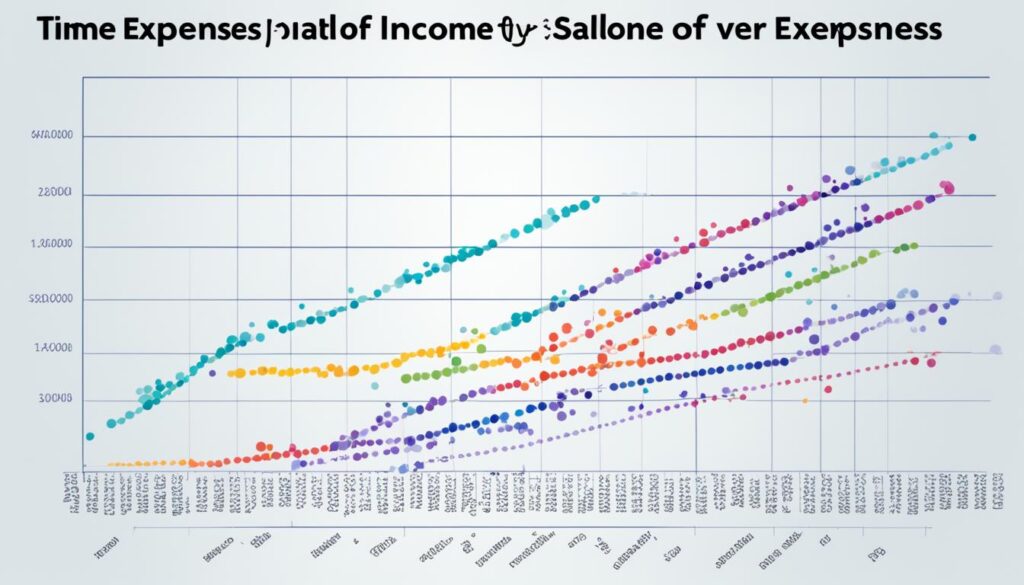
Comprehensive Transition Planning
Salon owners who are preparing for retirement need to develop a comprehensive transition plan that encompasses their business transition goals and retirement objectives. This strategic plan ensures a smooth and successful transition into the next phase of their lives. A well-crafted transition plan takes into account various considerations, including tax planning, retirement income distribution planning, estate planning, and insurance coverage.
Business Transition Plan
A crucial aspect of the comprehensive transition plan is the business transition plan. This plan outlines how salon owners will transfer ownership or exit the business when they retire. It involves identifying potential successors, whether it be family members, employees, or external buyers, and establishing a timeline for the transition. The business transition plan ensures that the salon owner’s retirement goals align with the future of the business.
Tax Planning
Effective tax planning is essential during the transition from salon ownership to retirement. This involves understanding the tax implications of the business sale, managing potential capital gains taxes, and exploring tax-saving strategies. By working with a tax professional, salon owners can optimize their tax situation and make informed decisions that minimize their tax burden during the transition period.
Retirement Income Distribution Planning
Retirement income distribution planning is a crucial component of the transition plan. Salon owners need to determine how they will sustain their desired lifestyle throughout retirement. This involves assessing different income sources, such as retirement accounts, investments, and Social Security benefits, and creating a distribution strategy that ensures a steady stream of income while preserving the principal amount. Working with a financial advisor is beneficial to develop a sustainable retirement income strategy.
Estate Planning
Estate planning is an important consideration for salon owners during the transition process. It involves creating a comprehensive plan that outlines how their assets will be managed and distributed upon their passing. This includes drafting a will, establishing trusts, designating beneficiaries, and addressing any potential estate tax liabilities. Proper estate planning ensures that salon owners’ wishes are carried out and provides financial security and peace of mind for their loved ones.
Insurance Coverage
Salon owners should review their insurance coverage as part of their transition planning process. This includes evaluating existing policies such as life insurance, disability insurance, and liability insurance to ensure they are adequately protected during retirement. Additionally, exploring long-term care insurance options can provide additional coverage and alleviate the financial burden of potential healthcare expenses later in life.
By creating a comprehensive transition plan that addresses business transition goals, retirement income distribution, tax planning, estate planning, and insurance coverage, salon owners can navigate the transition process confidently and secure their retirement goals. Seeking guidance from professionals specializing in each area ensures a well-rounded plan that sets the foundation for a fulfilling and financially secure retirement.
Managing Wealth and Financial Security
After successfully selling their salon business, salon owners find themselves with a substantial amount of wealth at their disposal. However, it is crucial for them to manage this wealth wisely and secure their long-term financial stability. Working with experienced financial professionals is essential in making informed investment decisions, preserving cash flow, and planning for retirement income distribution.
Financial professionals play a vital role in helping salon owners navigate the complexities of wealth management. They have the expertise to assess the unique financial situation of each salon owner and develop tailored strategies to optimize their wealth. By understanding salon owners’ goals and risk tolerance, financial professionals can provide personalized advice on how to allocate funds across various asset classes and investment vehicles.
Preserving cash is also a key consideration for salon owners. Financial professionals can guide them in creating an emergency fund that provides a financial safety net for unexpected expenses or business downturns. This cash reserve ensures that salon owners can weather unforeseen circumstances without compromising their long-term financial plans.
“Working with financial professionals ensures that salon owners have the expertise and guidance needed to navigate the complexities of wealth management and make informed decisions.”
Planning for retirement income distribution is another critical aspect of managing wealth. Financial professionals can help salon owners develop a comprehensive retirement income strategy that takes into account their lifestyle goals, risk tolerance, and projected expenses. By considering various sources of retirement income, such as Social Security, pension plans, and investment portfolios, financial professionals can devise a customized plan to provide a reliable and sustainable income stream during retirement.
It is important to recognize that managing wealth is not a one-time event but an ongoing process that requires regular evaluation and adjustments. Financial professionals assist salon owners in monitoring their investments, assessing their portfolio performance, and making necessary changes as market conditions and personal circumstances evolve.
By partnering with financial professionals, salon owners can confidently navigate the complexities of wealth management, preserve their cash reserves, and plan for a secure and prosperous retirement. Their expertise and guidance ensure that salon owners can make sound financial decisions, protecting their wealth and securing a prosperous future.

Conclusion
Securing a stable retirement income is a critical aspect of financial planning for salon owners. By implementing smart retirement savings strategies and utilizing retirement accounts like IRAs and SEP plans, salon owners can ensure a comfortable and financially stable retirement. It is essential for salon owners to take early steps in their careers to build a solid foundation for retirement.
Starting early and contributing regularly to retirement accounts, such as IRAs, can help salon owners accumulate wealth over time. Additionally, exploring alternative retirement savings options like SEP plans can provide additional financial security. Developing comprehensive transition and financial plans, including tax and estate planning, is also crucial for securing financial stability in retirement.
By taking these proactive measures, salon owners can enter retirement with confidence and enjoy the financial freedom they have worked hard to achieve throughout their careers. Retirement income for salon owners doesn’t have to be a daunting prospect. With the right strategies in place, salon owners can secure their financial future and enjoy a comfortable retirement.
FAQ
Why is saving for retirement important for salon owners?
What are the main sources of retirement income for salon owners?
What is an Individual Retirement Account (IRA) and why is it beneficial for salon owners?
How can salon owners set up a retirement plan?
What retirement savings options are available for independent service professionals like salon owners?
What is a SEP plan, and why is it suitable for salon owners?
What is a SIMPLE IRA, and how does it benefit self-employed professionals like salon owners?
What are the different types of IRAs available for salon owners?
What are qualified plans, and how can they help salon owners save for retirement?
What are solo 401(k) plans, and why are they advantageous for business owners like salon owners?
What are the first steps salon owners should take toward retirement savings?
Why is financial planning important for salon owners nearing retirement?
What is a comprehensive transition plan, and why is it important for salon owners?
How can salon owners manage their wealth and ensure long-term financial security after retirement?
Sophia is the analytical powerhouse of The Liberty Portfolio. Her keen analytical skills and meticulous attention to detail help us stay ahead of the curve. Sophia is responsible for researching current trends, data analysis, and regulatory changes that impact retirement planning. Her rigorous analysis underpins our content, providing the depth and accuracy that our users rely on for making critical investment decisions.
Retirement Planning
Why You Need Retirement Planning Now
Kickstart your financial future with retirement planning now, ensuring a secure and comfortable retirement ahead.
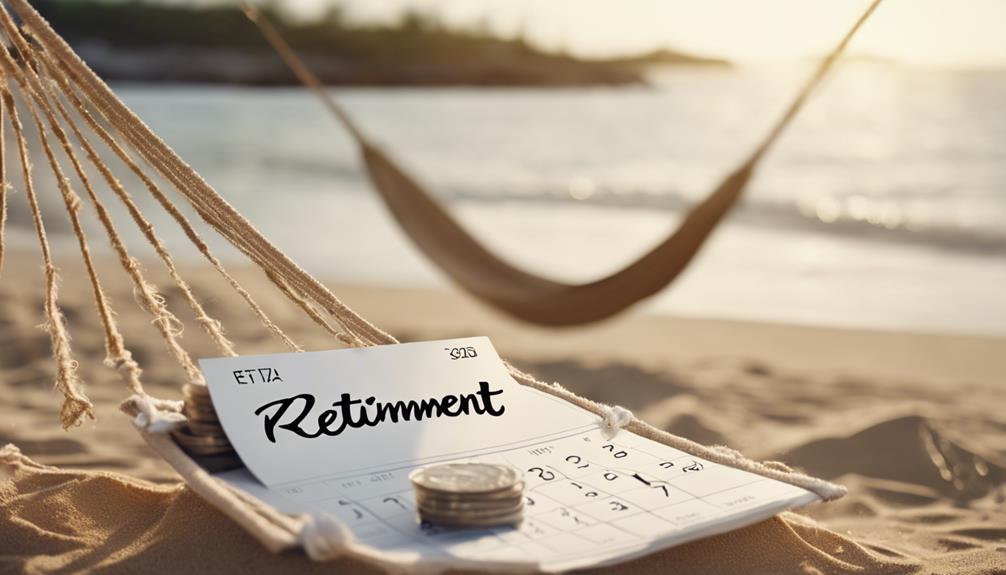
Starting retirement planning now is essential for securing our financial future. By planning early, we can maximize savings, benefit from compounding interest, and have more flexibility in our retirement decisions. This proactive approach reduces stress, offers a sense of security, and sets the stage for a well-prepared financial future. Diversifying income sources, setting clear financial goals, and seeking advice are key steps. Tax benefits, peace of mind, and long-term stability come with a holistic retirement plan. Secure your future by taking the first steps today towards a comfortable retirement.
Key Takeaways
- Early retirement planning maximizes savings and leverages compounding interest.
- It provides a sense of security and reduces stress.
- Planning ahead offers flexibility and more options for retirement decisions.
- Recognizing the importance leads to a well-prepared financial future.
- Starting now ensures a stable financial future and peace of mind.
Importance of Early Retirement Planning
Starting retirement planning early is vital for securing a stable financial future. When we plan for retirement ahead of time, we set ourselves up for financial success by maximizing our savings and allowing compounding interest to work in our favor.
The benefits of early retirement planning go beyond just financial gains; it also provides a sense of security and reduces the stress and uncertainty often associated with retirement. By starting early, we've more flexibility and options available to us when the time comes to retire.
This flexibility allows us to make informed decisions about our financial future and guarantees a smoother shift into retirement life. Hence, it's important to recognize the significance of early retirement planning in order to reap the rewards of a well-prepared financial future.
Secure Financial Future Through Planning

Securing a thorough financial future through retirement planning is essential for ensuring long-term financial stability and maintaining our desired lifestyle. Planning early and diversifying sources of retirement income can provide a safety net for unexpected expenses and increasing medical costs in retirement. By setting clear financial goals and working with a financial advisor, individuals can tailor their retirement savings to meet their specific needs and aspirations. A holistic retirement plan not only considers life expectancy but also aims to fulfill retirement dreams and aspirations.
Retirement planning offers tax advantages and peace of mind by knowing that finances are in order for the future. Whether the goal is to retire early or simply to have a comfortable retirement, strategic planning is key. Investing in retirement accounts and seeking guidance from a financial advisor can help individuals achieve a secure financial future. By taking steps now to build a holistic retirement plan, individuals can pave the way for financial independence and peace of mind in their later years.
Tax Benefits of Retirement Planning

When planning for retirement, it's important to take into account the tax benefits associated with various retirement accounts. Contributing to tax-deferred accounts like traditional IRAs and 401(k)s can lower taxable income, resulting in immediate tax savings.
Utilizing Roth IRAs or Roth 401(k)s can offer post-retirement tax benefits through tax-free withdrawals. Employer-sponsored retirement accounts can also provide tax-efficient investment growth.
Understanding contribution limits and the types of retirement accounts available is vital for maximizing tax advantages. Starting a retirement plan gives you a better chance to save money on taxes and increase your Social Security benefits.
Consider consulting a Certified Financial Planner to explore advanced strategies such as the back-door Roth IRA for high earners or the Savers Credit for lower-income individuals to enhance the amount saved for retirement.
Diversifying Income for Retirement

To guarantee financial stability in retirement, it's vital to diversify income sources, creating a safety net that mitigates risks and adapts to changing circumstances.
Diversifying income sources, such as pensions, investments, and part-time work, is essential for a stable retirement. Having multiple streams of income not only provides flexibility in managing expenses but also helps in unexpected situations.
By balancing income sources, one can maintain a comfortable lifestyle and cover rising costs as well as offset market fluctuations that may impact retirement savings. This strategic approach to diversification reduces financial risk and ensures a more secure financial future.
Embracing a diversified income strategy empowers individuals to navigate retirement with confidence and resilience. Start planning now to build a robust financial foundation that can weather any storm and provide the financial power needed to enjoy retirement to the fullest.
Avoiding Financial Stress in Retirement

Taking proactive steps to address financial concerns can greatly impact one's well-being during retirement. Planning for retirement now is essential to avoid financial stress in later years. Financial stress is not just a mental burden; it can also lead to physical health issues such as diabetes and heart disease. Over 70% of adults worry about money, affecting their overall physical health. Engaging in retirement planning reduces anxiety, depression, and poor sleep, contributing to better emotional well-being. It enhances overall financial wellness, positively impacting both physical and emotional health. By taking the necessary steps to secure our financial future, we can ensure a more comfortable and stress-free retirement.
| Benefits of Retirement Planning |
|---|
| Reduces Financial Stress |
| Improves Emotional Well-being |
| Enhances Physical Health |
| Ensures Overall Financial Wellness |
Frequently Asked Questions
Why Should You Plan for Retirement Now?
We plan for retirement now to secure our future, reduce stress, and guarantee financial stability. By starting early, we take control, build wealth, and enjoy peace of mind. The power lies in proactive preparation for a comfortable retirement.
What Is the $1000 a Month Rule for Retirement?
We save with purpose. The $1000 a Month Rule for Retirement guides us. It's about securing financial freedom. By aiming for $1000 monthly income, we plan wisely, ensuring a comfortable lifestyle in retirement.
What Are the 3 Biggest Pitfalls of Sound Retirement Planning?
For sound retirement planning, we must consider inflation's erosion of savings, underestimating life expectancy leading to fund depletion, and the risk of not diversifying income sources. Our choices now shape our future security.
Why Is It Important to Plan for Retirement and Have a Will?
Planning for retirement and having a will are essential. They guarantee financial security in old age and dictate asset distribution. Both provide peace of mind and stability, preventing family disputes and maintaining desired lifestyles.
Conclusion
In summary, beginning retirement planning early is essential for a secure financial future.
Did you know that only 33% of Americans have saved over $25,000 for retirement?
By taking advantage of tax benefits, diversifying income, and avoiding financial stress, you can set yourself up for a comfortable retirement.
Don't wait, start planning now to guarantee a worry-free future.
Lawrence founded The Liberty Portfolio to make complex retirement planning accessible to everyone. With extensive experience in investment strategies and financial planning, he leads our strategic direction and ensures that our offerings are aligned with the latest economic trends and regulations. Lawrence’s deep understanding of market dynamics and investment opportunities shapes our platform’s foundational content and tools.
Retirement Planning
Evaluating the Quality of an Insured Retirement Plan
Start evaluating your insured retirement plan quality by considering benefits, costs, and tax implications – your financial future depends on it.

Evaluating an insured retirement plan's quality involves examining policy benefits, costs, cash value, fund accessibility, tax implications, surrender charges impact, and withdrawal restrictions. Evaluate if the plan aligns with your retirement goals, and seek professional advice to understand its nuances. Consider premiums, fees, and cost structures to make informed decisions. Regularly monitor cash value growth to meet financial objectives. Utilize tax-advantaged fund accessibility for stable retirement income. Be mindful of surrender charges and withdrawal restrictions to maximize plan benefits. Understanding these aspects is key to evaluating the effectiveness of your insured retirement plan further.
Key Takeaways
- Assess alignment with financial goals and retirement objectives.
- Evaluate cost structure for premiums, fees, and charges.
- Monitor cash value growth for tax-advantaged income.
- Understand tax implications on contributions and withdrawals.
- Consider impact of surrender charges and withdrawal restrictions.
Policy Benefits Evaluation
When evaluating an insured retirement plan, we prioritize the policy benefits to determine its alignment with our financial goals and retirement objectives. It's essential to take into account the insurance aspect of the plan, ensuring that it provides the necessary coverage to protect our assets and loved ones. Additionally, looking into the policy benefits related to retirement is vital. We should pay close attention to features like tax-free distributions, which can have a substantial impact on our financial situation during retirement.
As we assess the policy benefits, we must also examine how they contribute to our overall financial goals. Ensuring that the plan offers potential gains and aligns with our retirement objectives is key to making an informed decision. Moreover, policies that offer flexibility with no age requirements for certain distributions can provide us with more control over our retirement funds. Seeking professional guidance to understand the nuances of these benefits is advisable to make the most of our retirement planning.
Cost Analysis

Let's explore the analysis of costs associated with the insured retirement plan to gauge its financial impact and competitiveness. When evaluating the quality of an insured retirement plan, it is important to delve into the cost analysis. This involves examining premiums, fees, and charges to understand the financial implications and competitiveness of the plan in the market. To assist in this evaluation process, a comparison of the cost structure with similar products can provide valuable insights.
| Aspect | Details |
|---|---|
| Premiums | Initial & Ongoing |
| Fees | Management & Admin |
| Charges | Surrender & M&E |
Cash Value Assessment

Evaluating the cash value within an Insured Retirement Plan (IRP) involves examining the growth of funds held in the policy. The cash value accumulation in an IRP plays a vital role in providing a tax-advantaged income stream during retirement.
By monitoring the growth of cash value, individuals can make certain that their IRP stays aligned with their financial goals. Accessing the cash value through withdrawals or policy loans offers flexibility to meet financial needs in retirement.
It's essential to gauge the performance of the cash value component regularly to maximize the benefits of an IRP. Understanding how the cash value grows over time and how it contributes to achieving financial objectives is key to making informed decisions about the IRP.
Fund Accessibility Review

Fund accessibility in Insured Retirement Plans (IRPs) presents a tax-advantaged method for meeting financial needs during retirement. IRPs offer the flexibility of accessing funds through policy loans or tax-free withdrawals from the cash value, providing an efficient way to supplement retirement income. Policy loans enable individuals to access cash value without triggering taxable events, allowing for strategic financial planning. Withdrawals from the cash value are not subject to taxes, enhancing the overall benefits of IRPs for retirement planning. The accessibility of funds through IRPs offers significant tax advantages, making it a powerful tool for securing financial stability during retirement.
| Fund Accessibility Features | Benefits |
|---|---|
| Policy Loans | Access cash value without tax implications |
| Tax-Free Withdrawals | Provide flexibility for retirement needs |
| Retirement Income | Supplement income efficiently |
| Tax Advantages | Enhance financial planning |
| Fund Accessibility | Secure financial stability in retirement |
Tax Implications Examination

When evaluating an Insured Retirement Plan, it's important to take into account the tax implications. Understanding the tax efficiency of contributions, potential penalties for early withdrawals, and the consequences of policy surrender is vital.
Tax Efficiency Assessment
Evaluating the tax efficiency of an Insured Retirement Plan (IRP) involves analyzing the implications of contributions, withdrawals, and distributions to optimize financial outcomes. Understanding the tax treatment of cash value growth, policy loans, and tax-free death benefits is vital in evaluating the tax efficiency of an IRP. IRPs can provide tax-deferred growth on cash value, tax-free withdrawals up to basis, and potentially tax-free death benefits for beneficiaries. Proper tax planning within an IRP can maximize benefits, minimize tax liabilities, and enhance the retirement strategy's effectiveness.
| Tax Efficiency Considerations | Benefits |
|---|---|
| Cash Value Growth | Tax-Deferred Growth |
| Policy Loans | Potential Tax Advantages |
| Tax-Free Withdrawals | Up to Basis Amount |
| Tax-Free Death Benefits | Potential for Beneficiaries |
Retirement Account Contributions
As we examine the tax implications of contributing to an Insured Retirement Plan (IRP), it's important to understand that these contributions aren't tax-deductible like traditional retirement accounts.
However, the growth of these contributions within the plan is tax-deferred, and if structured correctly, withdrawals can be tax-free. The type of permanent life insurance policy chosen for the IRP can impact the tax implications.
By leveraging the cash value growth of the policy, an IRP can provide tax-advantaged retirement income. To maximize tax benefits, careful planning and contribution structuring are essential.
It's vital to take into account these factors when aiming to optimize the tax efficiency of an Insured Retirement Plan for long-term financial security.
Withdrawal Penalty Consideration
Considering the potential impact of withdrawal penalties on an Insured Retirement Plan (LIRP) is essential for long-term financial planning and growth strategies. When evaluating withdrawal penalty considerations in an LIRP, we must be aware of the following:
- Early distribution can lead to significant tax implications and reduce the policy's cash value.
- Penalties imposed by the IRS aim to deter premature withdrawals from LIRPs.
- Understanding the tax consequences of early withdrawals is critical to avoid unnecessary penalties.
- Careful planning and consideration of tax implications can help maximize the benefits of an Insured Retirement Plan.
Premium Variations Consideration

Exploring the impact of premium variations on an insured retirement plan is vital for maximizing contributions and cash value growth. Financial decisions regarding premium variations can greatly influence the policyholder's ability to boost their contributions and enhance the cash value growth of their plan.
By understanding how premium adjustments affect the plan, individuals can make informed choices to optimize their financial outcomes. Policyholders should consider the implications of different premium payment options, such as level, flexible, or single premium payments, to align with their changing financial circumstances and coverage needs.
Adapting premium variations in response to evolving situations can help secure long-term benefits and guarantee the sustainability of the insured retirement plan. It's important to evaluate premium variations thoughtfully, as they play a fundamental role in shaping the overall effectiveness and success of the retirement strategy.
Consequences of Plan Surrender

Giving up an insured retirement plan can have significant consequences, including the impact of surrender charges and analysis of withdrawal restrictions. These factors can affect the overall financial value and growth potential of the plan, influencing long-term retirement income.
It's important to carefully assess these implications before making any decisions to surrender a plan, as understanding the full scope of consequences is essential for informed retirement planning.
Surrender Charges Impact
Understanding the impact of surrender charges is vital when evaluating an insured retirement plan. Here are four key points to keep in mind:
- High surrender charges can greatly reduce the cash value of the policy, impacting potential gains.
- Policy terms often specify the surrender charge schedule, so it's essential to review this information before making a commitment.
- Early cancellation may result in financial consequences and loss of benefits, making it important to plan for the long term.
- Being aware of surrender charges can help investors make informed decisions and avoid unnecessary fees, empowering them to maximize the benefits of their retirement plan.
Withdrawal Restrictions Analysis
In evaluating the implications of surrendering an Insured Retirement Plan, it's important to analyze the restrictions on withdrawals to comprehend the full impact on financial stability and long-term retirement goals. Withdrawal restrictions can result in tax consequences and penalties, affecting retirement income and overall savings.
Plans with surrender charges may reduce the cash value available upon surrender, further diminishing potential benefits. Surrendering the plan might also limit access to tax-advantaged funds important for retirement planning. Understanding these withdrawal restrictions is essential for making informed decisions regarding the Insured Retirement Plan.
Frequently Asked Questions
What Factors Should You Consider When Evaluating a Retirement Plan?
When evaluating a retirement plan, we consider investment options, fees, and performance. We assess administrative efficiency, compliance with regulations, and communication strategies. Fiduciary responsibilities, legal compliance, reporting, and disclosure also play vital roles in our evaluation process.
What Are the 3 Important Components of Every Retirement Plan?
When planning our retirement, we focus on savings, investments, and insurance. Regular contributions build a financial cushion, diversified investments grow funds, and insurance protects against unexpected events. These components combine for a secure retirement.
How Do You Evaluate a 401K Plan?
When we assess a 401k plan, we examine its investment choices, fees, and performance against our retirement objectives. We verify that it complies with regulations, communicates effectively, and upholds fiduciary responsibilities to secure our future.
What Does a Good Retirement Plan Look Like?
A good retirement plan looks like a well-structured financial vehicle that offers diversification, tax efficiency, flexibility, inflation protection, and ongoing reviews to guarantee alignment with retirement goals. It should maximize returns and minimize risks.
Conclusion
In evaluating the quality of an insured retirement plan, it's essential to take into account:
- Policy benefits
- Costs
- Cash value
- Fund accessibility
- Tax implications
- Premium variations
- Surrender consequences
Each aspect plays a significant role in determining the effectiveness and efficiency of the plan.
By thoroughly examining these factors in parallel, you can make informed decisions to secure a stable and prosperous retirement future.
Remember, careful evaluation leads to a secure financial future.
Lawrence founded The Liberty Portfolio to make complex retirement planning accessible to everyone. With extensive experience in investment strategies and financial planning, he leads our strategic direction and ensures that our offerings are aligned with the latest economic trends and regulations. Lawrence’s deep understanding of market dynamics and investment opportunities shapes our platform’s foundational content and tools.
Retirement Planning
How to Withdraw From Your Retirement Plan
Hone your retirement withdrawal strategy with age considerations, penalty-free options, and expert advice to optimize your income – delve into the details ahead!

When withdrawing from your retirement plan, consider age requirements for penalty-free withdrawals at 59 ½. Explore strategies like lump sums or periodic payments while understanding required minimum distributions for Traditional IRAs. Seeking professional financial advice can offer tailored strategies for your needs, like managing tax implications and withdrawal rules. Tailor your plan to income needs and consider exceptions for penalty-free withdrawals, such as for home purchases. It's crucial to make well-informed decisions to secure a stable income stream in retirement.
Key Takeaways
- Consider age 59 ½ for penalty-free withdrawals from retirement plans.
- Understand different withdrawal strategies like lump sum or periodic payments.
- Be aware of Required Minimum Distributions for Traditional IRAs.
- Seek professional financial advice for personalized withdrawal recommendations.
- Tailor withdrawal strategy to match income needs and financial objectives.
Age Requirements for Penalty-Free Withdrawals
When we reach age 59 ½, we can start making penalty-free withdrawals from retirement plans. This age marks a significant milestone in our financial journey, granting us the freedom to access our hard-earned funds without facing additional taxes or penalties. It's a moment of empowerment, where we can take control of our retirement savings and utilize them strategically to support our desired lifestyle.
One key consideration at this age is the traditional IRA, which allows for penalty-free withdrawals once we reach this pivotal point. By understanding the rules surrounding withdrawals from a traditional IRA, we can optimize our financial decisions and make the most of our retirement savings. Planning ahead and being aware of the age requirements for penalty-free withdrawals is vital in managing the complexities of retirement planning.
As we approach this age, it's essential to assess our financial goals and consider how we can leverage our retirement funds to secure a prosperous future. By staying informed and proactive, we can make informed decisions regarding our withdrawals and set ourselves up for financial success in the long run.
Different Withdrawal Strategies to Consider

When planning for retirement, we can opt for a Lump Sum Option or a Periodic Payment Plan to manage our withdrawals effectively.
These strategies allow us to tailor our income stream according to our financial needs and investment goals.
Lump Sum Option
Considering different withdrawal strategies is vital when deciding on the lump sum option for your retirement account balance. A lump sum withdrawal provides immediate access to your entire account balance, but it's important to weigh the tax implications and penalties involved.
If you're under 59.5 years old, you may face a 10% penalty on the withdrawal. Additionally, the full amount taken out as a lump sum could be subject to income taxes.
To maximize your retirement income and future growth potential, explore alternative strategies like systematic withdrawals or annuitization. These methods offer more controlled ways to manage your funds while potentially reducing tax burdens and penalties.
Evaluate all options carefully before making a decision to ensure your retirement savings work most effectively for your financial goals.
Periodic Payment Plan
Exploring the Periodic Payment Plan as an alternative to lump sum withdrawals offers retirees flexibility in managing their retirement income streams. With this strategy, retirees can choose between fixed dollar amounts or systematic withdrawals, tailoring their withdrawals to meet specific income needs and goals.
It's important to weigh the tax implications and potential impact on long-term savings when opting for the Periodic Payment Plan. This method guarantees consistent income streams during retirement, providing a sense of stability and financial security.
Understanding Required Minimum Distributions (RMDs)

To comprehend Required Minimum Distributions (RMDs), we need to grasp that they're applicable to Traditional IRAs but not Roth IRAs. These distributions, mandated by the IRS, guarantee that individuals withdraw a minimum amount from their Traditional IRAs annually once they reach a certain age, currently set at 72 for 401(k)s. Failure to withdraw the required minimum could result in a tax penalty, underscoring the importance of adhering to these regulations.
When it comes to taxation, the funds withdrawn through RMDs are treated as ordinary income, impacting your tax liabilities for the year in which they're taken. It's essential to plan ahead for these distributions, considering their potential tax implications and incorporating them into your overall retirement income strategy.
Additionally, be aware that early withdrawals from Traditional IRAs before the age of 59 1/2 can trigger a 10% tax penalty on top of the regular income tax due, making it vital to understand the rules surrounding these retirement accounts to avoid unnecessary financial setbacks.
Seeking Professional Financial Advice

When planning to withdraw from a retirement plan, it's important to seek professional financial advice.
Financial advisors can provide tailored guidance to optimize retirement income and navigate tax implications.
Their expertise can help create a sustainable withdrawal strategy that aligns with both short-term financial needs and long-term retirement goals.
Expert Guidance Benefits
Seeking professional financial advice is crucial when planning for retirement withdrawals to guarantee optimal outcomes tailored to individual needs and goals. Consulting a financial advisor can provide valuable insights into withdrawal strategies, helping navigate complex tax implications effectively. Advisors offer personalized recommendations on the timing, amounts, and methods of retirement plan withdrawals, aiming to minimize taxes, penalties, and risks associated with withdrawals.
Their expertise ensures a secure and sustainable retirement income plan aligned with specific needs and objectives. By working with a financial advisor, individuals can optimize their retirement savings, making informed decisions that support long-term financial security. Expert guidance benefits individuals by offering tailored strategies that maximize retirement funds and minimize potential pitfalls.
Financial Planner Importance
Considering our unique financial situation and retirement goals, a financial planner plays a pivotal role in providing in-depth advice tailored to optimize our retirement income strategy. Seeking professional advice from a financial planner can help us navigate the intricate tax implications and withdrawal rules associated with retirement plans.
By working with a financial planner, we can develop a withdrawal strategy that maximizes our retirement income while minimizing taxes and penalties. Their expertise allows for a thorough analysis of factors such as risk tolerance, investment options, and market trends to optimize our retirement savings.
Consulting a financial planner instills confidence in our retirement plan, ensuring a secure financial future and peace of mind as we move forward.
Tailoring Withdrawal Strategy to Income Needs

Tailoring our withdrawal strategy to match our income needs in retirement involves a careful assessment of our desired lifestyle and expenses to guarantee financial stability. To secure a powerful and strategic approach, consider the following:
- Determine Your Desired Income Needs: Calculate your retirement income requirements based on your lifestyle preferences and anticipated expenses to establish a clear financial goal.
- Tailor Your Withdrawal Strategy: Customize your withdrawal plan to align with your income needs, whether you opt for a fixed or flexible approach that suits your financial objectives.
- Consult with a Financial Advisor: Seek guidance from a professional advisor to create a tailored withdrawal strategy that maximizes your retirement income potential and safeguards your financial future.
Rules and Regulations for 401(k)s

Understanding the rules and regulations governing 401(k) accounts is vital for effectively managing retirement savings. When it comes to 401(k) withdrawals, there are specific guidelines to follow.
At 59.5 years old, individuals can start withdrawing funds from their 401(k) penalty-free, although in some cases, this age threshold is lowered to 55. Mandatory withdrawals, known as required minimum distributions (RMDs), must begin at age 72, or 70.5 for certain individuals.
Early withdrawals before the age of 59.5 come with a 10% penalty in addition to income taxes. However, hardship withdrawals are exempt from the 10% penalty, though income tax payment is still required.
Additionally, 401(k) loans allow for borrowing up to $50,000 or 50% of the vested balance without incurring the 10% penalty. These loans must be repaid within five years. It's essential to adhere to these rules to maximize the benefits of your 401(k) while avoiding unnecessary penalties.
Strategies for Roth and Traditional IRAs

Exploring effective strategies for managing Roth and Traditional IRAs is vital for optimizing your retirement savings. When contemplating withdrawals from these accounts, it's important to make informed decisions to maximize your financial power. Here are three potent strategies to ponder:
- Utilize Roth IRA Contributions: Take advantage of penalty-free withdrawals on your Roth IRA contributions. By tapping into these funds strategically, you can access money without incurring additional taxes or penalties, giving you more control over your financial future.
- Plan for Traditional IRA Withdrawals: Be mindful of the tax implications and penalties associated with Traditional IRA withdrawals before age 59 ½. Consider waiting until you reach age 59 ½ to avoid the 10% penalty and make sure that you're making the most of your retirement savings.
- Leverage Exceptions: Understand the exceptions that allow for penalty-free withdrawals from both Roth and Traditional IRAs, such as first-time home purchases or qualified education expenses. By knowing and utilizing these exceptions, you can make the most of your retirement funds while staying in control of your financial destiny.
Frequently Asked Questions
Can I Pull My Retirement Money Out Whenever I Want?
Yes, we can't pull retirement money out whenever we want. IRS rules dictate specific conditions for withdrawals. Early access before 59 ½ could incur penalties. Understanding regulations safeguards savings from unnecessary losses and taxes.
Can I Close My 401K and Take the Money?
We can close a 401(k) and take the money, but it may lead to penalties. Consulting a financial advisor is essential to weigh the consequences and explore alternatives like hardship withdrawals or loans before making a decision.
How Do I Start Withdrawing for Retirement?
To start withdrawing for retirement, it's essential to understand the implications of early withdrawals. Consult a financial advisor for guidance on managing penalties and taxes, ensuring your retirement savings remain secure and optimized for future use.
Can a Retirement Plan Be Cashed Out?
Yes, a retirement plan can be cashed out, but it may incur penalties and taxes. Consider the long-term impact before making this decision. Consult a financial advisor for guidance on reaching your financial goals.
Conclusion
As we wrap up our discussion on how to withdraw from your retirement plan, remember that managing your finances is like sailing a ship on the open sea.
Stay the course, adjust your sails as needed, and seek out the guidance of experienced captains along the way.
With careful planning and strategic decision-making, you can confidently sail into the sunset of retirement, knowing that your financial future is secure.
Fair winds and following seas on your retirement journey!
Lawrence founded The Liberty Portfolio to make complex retirement planning accessible to everyone. With extensive experience in investment strategies and financial planning, he leads our strategic direction and ensures that our offerings are aligned with the latest economic trends and regulations. Lawrence’s deep understanding of market dynamics and investment opportunities shapes our platform’s foundational content and tools.
-

 IRA Investing3 months ago
IRA Investing3 months agoUnderstanding Your Individual Retirement Account (IRA): Types, Investments, and How It Works
-

 Bitcoin IRA3 months ago
Bitcoin IRA3 months agoBitcoin IRA Gold: Secure Your Retirement Savings
-

 IRA Investing3 months ago
IRA Investing3 months agoHow Are Roth IRAs Invested?
-

 IRA Investing3 months ago
IRA Investing3 months agoIRA Investing Basics
-

 Bitcoin IRA3 months ago
Bitcoin IRA3 months agoEthereum IRA: Invest in Crypto with Your Retirement Fund
-

 Gold IRA3 months ago
Gold IRA3 months agoDiscover the Advantages of a Gold Retirement Account
-

 Bitcoin IRA3 months ago
Bitcoin IRA3 months agoIs Bitcoin IRA Tax Free?
-

 Bitcoin IRA3 months ago
Bitcoin IRA3 months agoUltimate Guide to Crypto IRA Investment Options
